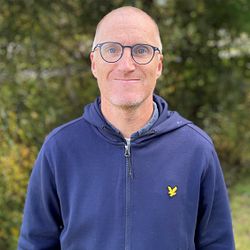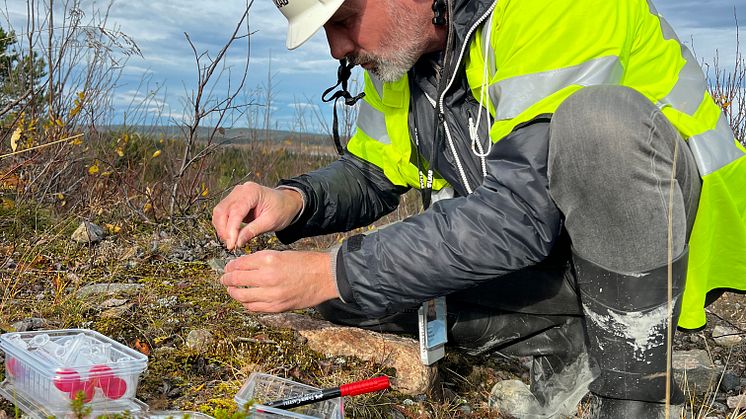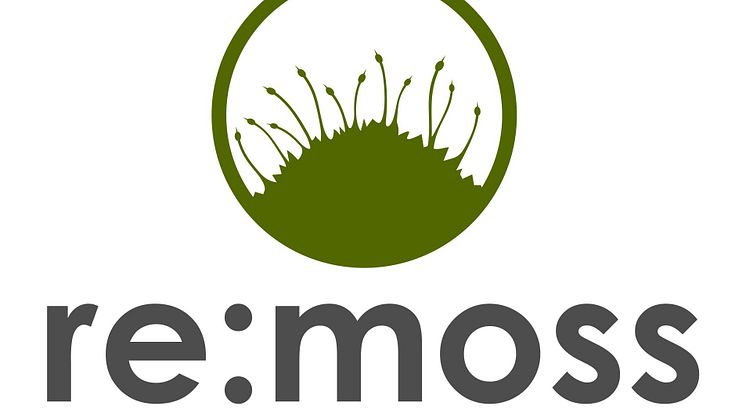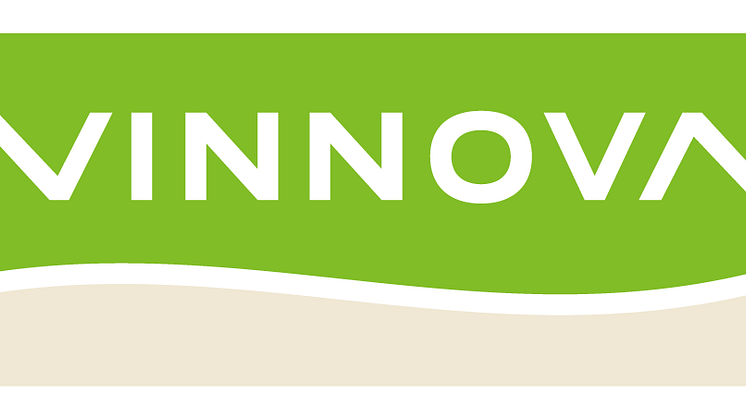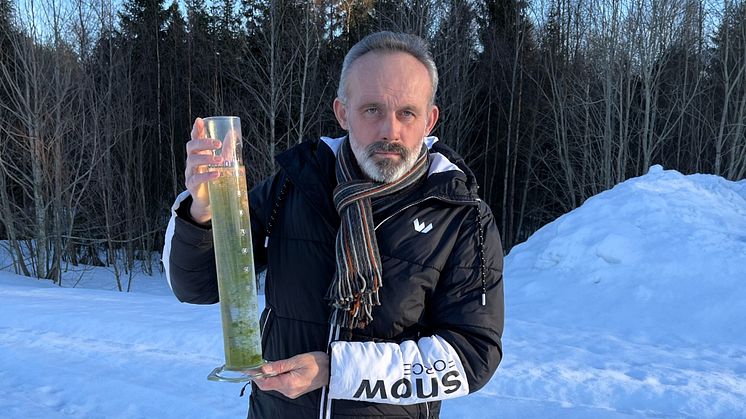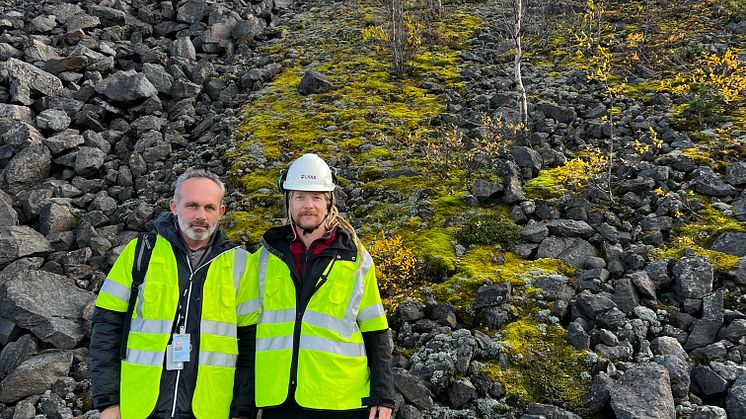
Press release -
Eco-innovation from Umeå breaking new ground for the mining industry
Restoring natural ecosystems in mining disturbed landscapes is a crucial yet complex process. A groundbreaking Swedish initiative, which employs moss to accelerate this restoration, is now being heralded as a potential game changer for the global mining industry.
“If it turns out as well as expected, it could set a new standard for the mining industry”, says VAST’s CEO, Matt Baida, about the Vinnova and mining industry financed project, initiated by Daniel Pacurar, Founder and Executive Chairman of Boreal Orchards AB, and featuring four major mining companies, VAST AB and the Swedish University of Agricultural Sciences (SLU).
Daniel Pacurar first met representatives of the Swedish mining industry at the Swedish Mining Innovation and Research Day in Luleå in May. Less than six months later, Vinnova (the Swedish Agency for Innovation Systems) and the four mining industry partners have jointly provided 2.8 million SEK in funding the project ‘ReMOSS: Ecological restoration of post-mining landscapes with native moss’.
Boreal Orchards, the landscape architect agency VAST AB, SLU and mining companies Boliden, Copperstone Resources, LKAB, and Talga are the seven parties involved in the project, which the strategic innovation program Swedish Mining Innovation, a joint venture by Vinnova, Formas and the Swedish Energy Agency supports.
The project runs to June 2025
The project will run from November 2023 to June 2025, but Daniel, who already receives business support from Umeå Biotech Incubator (UBI), and with leading support from LKAB and Talga has made a flying start after visiting Kiruna in September to evaluate the sites and collect moss samples. Using this native moss, he will now produce a moss mixture which will then be hydro-seeded at two separate locations: a test site operated by LKAB, and a previous graphite trial mine site owned by Talga.
The moss is a component of the biocrust, which forms a protective layer for soil and consists of small organisms that help the soil stay healthy. It grows on all types of substrates – even stone and rocks. When moss is introduced to landscapes that have been mined, it helps create the right conditions for other vegetation to establish faster but naturally.
“Mining disturbed land is associated with habitat destruction, biodiversity loss, and negative visual impact. We aim to accelerate the ecological restoration of these sites and to return them to nature and communities. The formation of biocrust is crucial for successful ecological restoration, and moss is a specific and important component of the biocrust”, says Daniel Pacurar, who explains that the advantages of moss for ecological restoration are numerous.
“Mosses form a protective layer on a substrate that prevents erosion, thus reducing dust formation, they are hardy and well adapted to harsh environments and conditions, do not compete with other vegetation, and create a natural foundation for other plants to build upon”.
First meeting an "aha" experience
The landscape architect agency VAST AB works with geomorphic design, a design method that uses nature as a reference to create new mining landforms from the sites overburdened or waste rock.
Matt Baida, CEO of VAST, is Project Manager for ‘re:moss’, and described his first meeting with Daniel Pacurar as an “aha” experience.
“When Daniel explained what moss can do, it seemed so obvious and was a real eye-opener. The mining industry in Sweden is aware of the post-mining challenges and is getting better at addressing them. I look forward to seeing how it evolves, and how other plants establish with the moss”, says Matt Baida.
"Crucial to recreate functional local ecosystems"
One of the participating companies, LKAB, has set ambitious goals for biodiversity. Sustainable and value-creating post-treatment is key to achieving these goals. Their vision is to restore natural ecosystems and enable activities such as reindeer herding and outdoor recreation to return to the areas. However, the company is still searching for effective tools to manage the complex restoration process fully.
“It is crucial for LKAB to recreate functional local ecosystems when we leave an area. While planting trees is essential, it is also important to introduce other layers, such as mosses, lichens, and shrubs. Establishing an ecosystem from the ground up with moss is particularly promising as it can help establish vegetation and increase the amount of organic material on barren surfaces."
Talga is building a battery anode factory in Luleå. To produce anodes it needs graphite, which it plans to extract from its mine near Vittangi. The company's plans for a Swedish mine-to-anode operation are well advanced, and for Talga, landscape restoration is a key component of any development.
Many advantages of the moss
“Mining is a temporary land use. It is our responsibility to conduct our business in an environmentally and socially sensitive manner. The land needs to and will be used for something else in the future and it is our responsibility to prepare it in the best way possible. We have therefore developed a closure plan with guidelines for how we treat the environment while mining and how to leave the landscape in good condition afterward”, says Peter French, Environment and Community Manager at Talga.
Just like the other parties involved in the project, he recognizes the many advantages of moss. In addition to stabilizing the soil and providing the conditions for replanting vegetation, Talga also values its contribution from an aesthetic perspective.
“When land is broken up, regardless of whether it is for mining or logging, a different, more sterile, visual impression is created. This project has great potential to use existing materials and technology to help recreate the landscape, with the moss laying a green foundation that nature can build on”.
Article highlights:
* Daniel Pacurar and Boreal Orchards are heading a Vinnova and mining industry-funded project to use moss for post-mining landscape restoration.
* The ‘re:moss’ project aims to create biocrusts using moss to promote ecological recovery and support other vegetation.
* Native mosses are used and create a foundation for other plants, contributing to the recovery of the landscape.
* The project involves geomorphic design and could set a new standard for more environmentally friendly mining and landscape restoration.
* Besides Boreal Orchards (with business support provided by UBI), the landscape architect agency VAST AB, SLU and mining companies Boliden, Copperstone Resources, LKAB, and Talga are all participating in the project.
For more info, please contact:
Daniel Pacurar, Boreal Orchards AB
danielpacurar@borealorchards.se
+46(0)761 27 62 49
Matt Baida, CEO VAST AB & project manager re:moss
matt@vast-la.com
+46 (0)70 789 23 03
Topics
Categories
Umeå Biotech Incubator
